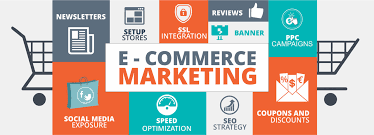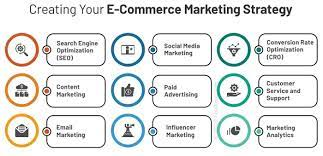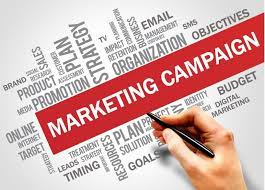E-commerce Marketing Tips: Boost Sales with Pro Strategies
April 25, 2025
Ron

In today’s dynamic digital landscape, the world of e-commerce is thriving. However, with increasing competition, it’s crucial to stay ahead of the curve and implement effective, ecommerce marketing tips and strategies to boost sales and ensure your e-commerce business’s success. In this blog post, we’ll explore pro-level e-commerce marketing tips that can elevate your game and help you achieve your sales goals.
1. Mastering SEO for E-commerce
Search Engine Optimization (SEO) is the cornerstone of a successful e-commerce business. Start by conducting thorough keyword research to understand what your potential customers are searching for. Implement on-page SEO techniques, optimize product descriptions, and create high-quality, engaging content. Don’t forget the importance of meta tags and alt text for images. SEO will ensure your e-commerce site ranks higher in search results, driving organic traffic and increasing sales.
2. Harness the Power of Social Media
Social media marketing is an invaluable tool for e-commerce businesses. Create a strong presence on platforms like Facebook, Instagram, and Twitter. Engage with your audience, post compelling content, and run targeted ad campaigns. Social media is not just about promoting your products; it’s about building a community and connecting with your customers on a personal level.
3. Email Marketing Excellence
Email marketing is a direct and effective way to engage with your existing customers and nurture potential leads. Build a subscriber list and send out engaging newsletters, product updates, and exclusive offers. Personalize your emails to make your customers feel valued, and watch your sales grow.
4. Conversion Rate Optimization (CRO)
Increasing website traffic is essential, but converting visitors into customers is equally crucial. Implement CRO techniques such as A/B testing, improving website navigation, and enhancing the shopping cart checkout process. Make sure your website loads quickly and is mobile-responsive, as a smooth user experience can significantly impact sales.
5. Analyze and Optimize
Regularly analyze your ecommerce marketing and-commerce data to identify trends, customer behaviour, and areas for improvement. Use analytics tools to gain insights into what’s working and what isn’t. Then, optimize your strategies accordingly. Data-driven decisions are key to staying competitive.
6. Build a Strong Brand
Your e-commerce brand is more than just a logo; it’s the essence of your whole ecommerce business. Invest in building a strong, recognisable brand that resonates with your target audience. Establish trust and credibility, and your customers will keep coming back.
7. Leverage Influencer Marketing
Influencer marketing has become a powerful tool in the e-commerce world. Collaborate with influencers in your niche who can promote your products to their engaged followers. Their endorsement can provide a substantial boost to your online sales alone.
8. Customer Reviews Matter
Encourage customers to leave reviews on your products and services. Positive reviews build trust and credibility. Address negative reviews professionally and use them as an opportunity to improve your offerings.
9. Stay Updated with the Latest Trends
The world of e-commerce is ever-evolving. Stay updated with the latest industry trends and technologies. Adopt new tools and strategies to maintain your competitive edge.
10. Measure Your ROI
Always measure the return on investment for your marketing efforts. Track the performance of your marketing plan and strategies and allocate resources to the most effective ones.
E-commerce Marketing Tips: Ecommerce Marketing

E-commerce marketing encompasses all the activities and strategies employed to promote and sell products or services online. This field has evolved significantly over the years, with businesses adopting a variety of techniques to attract, engage, and convert online consumers into paying customers.
1. Search Engine Optimization (SEO)
Search Engine Optimization, or SEO, plays a pivotal role in e-commerce marketing. It involves the process of optimizing your website’s content and structure to make it more visible and appealing to search engines like Google. By targeting relevant keywords, optimizing product descriptions, and ensuring your site’s technical aspects are up to par, you can improve your search engine rankings and draw organic traffic to the product pages of your e-commerce store.
2. Content Marketing
Content is king in the digital world. A well-executed content marketing strategy involves creating valuable, informative, and engaging content that resonates with your target audience. Whether it’s blog posts, product descriptions, or videos, compelling content can a great way to attract and retain customers, establish your brand’s authority, and drive sales.
3. Social Media Marketing
In today’s interconnected world, social media platforms are powerful tools for e-commerce marketing. Maintaining a strong presence on platforms like Facebook, Instagram, and Twitter allows businesses to connect with their audience, promote products, and run targeted ad campaigns. Engaging with customers on social media can foster a sense of community, loyalty program and trust.
4. Email Marketing
Email marketing is a direct and cost-effective way to reach out to your existing customer base and nurture potential leads. By creating tailored email campaigns, offering exclusive promotions, and providing valuable content, you can keep your audience engaged and informed.
5. Pay-Per-Click Advertising (PPC)
PPC advertising involves placing ads on search engines and social media platforms. Businesses pay a fee each time their ad is clicked. This strategy can quickly drive traffic to your e-commerce site and, when well-targeted, can result in conversions.
6. Influencer Marketing
Influencer marketing has gained traction in recent years. Partnering with influencers in your niche allows you to tap into their engaged audience and gain credibility. Influencers can promote your products or services to a wider audience, increasing brand exposure and potentially driving sales.
7. Data Analytics
Data is invaluable in e-commerce marketing. Using analytics tools, you can gain insights into customer behaviour, track the performance of your ecommerce marketing strategy and efforts, and make data-driven decisions to improve your strategies continually.
8. User Experience and Conversion Rate Optimization
A seamless user experience on your e-commerce website is critical. Ensure that your your ecommerce site is mobile-responsive, loads quickly, and has an intuitive navigation structure. By conducting A/B testing and optimizing the checkout process, you can increase conversion rates and maximise your sales potential.
Marketing Strategies
Marketing strategies are crucial for businesses to effectively promote their products and services to the right audience. Implementing a combination of different tactics and platforms is often key to achieving varied marketing objectives.
1. Inbound Marketing
- Content Creation: Develop valuable content that addresses customer pain points and establishes your brand as an authority.
- SEO: Optimize your website and content for search engines to increase organic visibility.
- Lead Nurturing: Engage and nurture leads through personalized email campaigns and content marketing.
2. Social Media Marketing
- Platform Optimization: Choose and optimize the social media platforms that align with your target audience.
- Engagement: Engage with your audience through comments, messages, and interactive content.
- Influencer Collaborations: Partner with influencers to broaden your reach and credibility.
3. Email Marketing
- Segmentation: Segregate your email list based on customer behaviors, preferences, and purchase history.
- Personalization: Personalize email content to make it more relevant to individual recipients.
- Automation: Implement automated email sequences to guide customers through their buying journey.
4. Paid Advertising
- PPC Campaigns: Utilize pay-per-click campaigns on platforms like Google Ads to drive targeted traffic.
- Social Media Ads: Leverage paid advertising on social media to promote products and special offers.
- Retargeting: Implement retargeting ads to re-engage visitors who have interacted with your brand online.
5. Affiliate Marketing
- Affiliate Programs: Develop programs that incentivize affiliates for promoting and selling your products.
- Partnership Building: Establish relationships with affiliates that align with your brand and target market.
- Commission Structures: Design appealing commission structures to motivate high performance.
6. Event Marketing
- Webinars: Host webinars to educate your audience about your products and industry trends.
- Live Events: Organize live events, either virtually or in-person, to connect with your audience and showcase your offerings.
- Networking: Use events to network with potential clients, partners, and influencers.
7. Video Marketing
- Video Content: Create compelling video content that demonstrates product usage, shares customer testimonials, or provides value through education.
- Platform Selection: Utilize platforms like YouTube, Instagram Reels, and TikTok to disseminate your video content.
- Storytelling: Employ storytelling within your video content to make your brand and products more relatable.
8. Referral Marketing
- Referral Programs: Develop referral programs that reward customers for bringing in new business.
- Advocacy: Encourage and enable existing customers to become brand advocates.
- Customer Reviews: Highlight positive customer reviews and testimonials across your marketing channels.
9. Guerilla Marketing
- Unexpected Campaigns: Implement surprising and unconventional campaigns that grab attention.
- Viral Potential: Create content with the potential to go viral within your target market.
- Budget-Friendly: Often, guerilla marketing is cost-effective, making it suitable for businesses with limited budgets.
10. Community and Relationship Building
- Forums and Groups: Participate in or create online forums and groups that align with your brand.
- Customer Service: Provide exceptional customer service to build strong relationships.
- Feedback Loops: Implement feedback loops to understand and act upon customer insights.
Ecommerce Marketing Strategies

E-commerce marketing strategies encompass a variety of methods aimed at driving traffic to an online store, converting that traffic into paying customers, and retaining those customers post-purchase. A holistic e-commerce marketing strategy might leverage multiple channels and cross selling and techniques to create a cohesive customer journey.
Ecommerce Store
An e-commerce store operates on a digital platform, providing a virtual space where buyers and sellers interact to make a purchase together. Building, managing, and optimizing an e-commerce store require a combination of strategic planning, technological know-how, and customer-centric practices.
Getting Started: Setting Up Your E-commerce Store
1. Business Plan and Niche Selection:
- Define Your Niche: Identify the market segment you wish to target.
- Business Model: Decide whether you’ll be selling products, services, or both.
2. Product Sourcing and Management:
- Inventory Management: Choose between dropshipping, warehousing, or using a fulfillment center.
- Product Details: Ensure accurate, detailed product descriptions and high-quality images.
3. Technology and Platform:
- Platform Selection: Choose an e-commerce platform suitable for your needs (Shopify, WooCommerce, Magento, etc.)
- User-Friendly Design: Ensure the design is intuitive, mobile-friendly, and visually appealing.
4. Payment and Security:
- Payment Options: Provide varied payment options (credit card, PayPal, etc.)
- Security: Ensure your website is secure with SSL encryption for protecting customer data.
5. Legalities:
- Business Registration: Register your e-commerce store and acquire necessary business licenses.
- Policy Generation: Create clear, concise policies (return, privacy, shipping, etc.)
Key Components of E-commerce Operations:
1. Website Optimization:
- SEO: Implement on-page and off-page SEO strategies.
- Loading Speed: Ensure quick website loading times to reduce bounce rates.
2. Marketing Strategies:
- Social Media: Leverage social media platforms for promotion and customer engagement.
- Email Marketing: Engage subscribers with regular updates, offers, and personalized content.
- PPC Advertising: Utilize paid advertising to drive targeted traffic to your store.
3. Customer Experience and Support:
- Customer Service: Offer stellar customer support through various channels (email, chat, phone).
- User Experience: Ensure easy navigation, clear CTAs, and a seamless checkout process.
4. Analytics and Feedback:
- Data Analysis: Use analytics to track website traffic, sales, and customer behavior.
- Feedback System: Implement a system to collect, review, and act upon customer feedback.
5. Scaling Your Business:
- Expand Product Line: Gradually add new products or services based on demand and trends.
- Global Reach: Explore possibilities for international shipping and global marketplaces.
6. Logistics and Fulfillment:
- Shipping Partners: Choose reliable shipping and logistics partners.
- Order Tracking: Provide customers with order tracking options and clear delivery timelines.
Ecommerce Businesses
E-commerce businesses have taken the world by storm, crafting a substantial space in the global marketplace by blending technology with retail. This digital transformation has not only reshaped consumer behavior but also revolutionized the way businesses operate.
Types of E-Commerce Businesses
1. B2C – Business to Consumer
- Example: Amazon, Alibaba
- Characteristics: Direct transactions between businesses and end consumers.
2. B2B – Business to Business
- Example: Alibaba, ThomasNet
- Characteristics: Transactions between businesses, often involving bulk transactions.
3. C2C – Consumer to Consumer
- Example: eBay, Poshmark
- Characteristics: Platforms where consumers sell directly to other consumers.
4. C2B – Consumer to Business
- Example: Upwork, Shutterstock
- Characteristics: Individual consumers sell products or offer services to businesses.
5. D2C – Direct to Consumer
- Example: Casper, Warby Parker
- Characteristics: Manufacturers sell directly to consumers, bypassing retailers.
6. Social Commerce
- Example: Facebook Marketplace, Instagram Shops
- Characteristics: Buying and selling through social media platforms.
7. Voice Commerce
- Example: Ordering via Alexa or Google Home
- Characteristics: Using voice recognition technology to make purchases.
8. Mobile Commerce
- Example: Shopping through Amazon App
- Characteristics: Transactions conducted via mobile devices.
Key Elements for E-Commerce Businesses Success
1. Technology Integration
- Implement robust e-commerce platforms and technological solutions that enhance operational efficiency.
2. User Experience (UX)
- Provide an intuitive, easy-to-navigate, and pleasant shopping experience across all devices.
3. Security
- Prioritize security measures to protect customer data and establish trust.
4. Customer Service
- Offer stellar customer service through swift response times and resolving issues effectively.
5. Marketing
- Implement a strategic mix of SEO, content marketing, social media, and paid advertising.
6. Logistics and Supply Chain Management
- Ensure efficient, reliable, and transparent order fulfillment and delivery processes.
7. Product Management
- Present detailed product information, quality images, and customer reviews to assist purchasing decisions.
8. Data Analytics
- Leverage data analytics to gain insights into customer behavior and optimize strategies accordingly.
9. Globalization
- Explore international markets, accommodating different languages and currencies.
10. Legal and Ethical Compliance
- Adhere to regulatory requirements and uphold ethical standards.
Challenges and Solutions in E-Commerce
Challenges
- Competition: A saturated market with numerous players.
- Customer Retention: Ensuring repeat business in a choice-abundant environment.
- Data Security: Protecting customer and business data from breaches.
- Logistical Issues: Managing inventory, shipping, and returns smoothly.
Solutions
- Unique Selling Proposition (USP): Differentiating your brand in the crowded marketplace.
- Loyalty Programs: Offering rewards and personalized experiences for repeat customers.
- Cybersecurity Measures: Employing stringent cybersecurity protocols.
- Technological Investments: Leveraging technology to streamline logistics and inventory management.
Future Trends in E-Commerce
- Blockchain for Enhanced Security
- AI and Machine Learning for Personalization
- Sustainability in Product and Packaging
- AR/VR Integration for Virtual Shopping Experiences
- Adoption of Cryptocurrencies
Marketing Campaign

Crafting a successful marketing campaign involves a mix of strategic thinking, creativity, and data-driven decision-making. It’s pivotal to keep the target audience at the core of every decision and to be flexible in adapting campaign elements based on performance data. A well-orchestrated marketing campaign not only enhances brand visibility but also fosters customer relationships, driving business growth.
1. Define Campaign Objectives
- Clear Goals: Identify what you want to achieve, such as increasing brand awareness, driving sales, or generating leads.
- Metrics: Determine Key Performance Indicators (KPIs) to measure success.
2. Identify Target Audience
- Demographics: Understand age, gender, income, and other demographic factors.
- Psychographics: Know your audience’s interests, behaviors, and preferences.
- Pain Points: Identify problems or needs that your product/service can solve.
3. Develop a Unique Selling Proposition (USP)
- Differentiation: Determine what sets your product/service apart.
- Value Proposition: Clearly articulate the value your product/service brings to consumers.
4. Craft the Campaign Message
- Relevance: Ensure the message resonates with the target audience’s needs and desires.
- Consistency: Maintain a consistent message across all marketing channels.
- Engagement: Make sure the message is engaging and encourages interaction.
5. Choose Marketing Channels
- Multi-Channel Approach: Use a combination of digital and traditional marketing channels.
- Platform Relevance: Choose platforms that are popular among your target audience.
- Budget Allocation: Distribute your budget across channels strategically, considering cost and impact.
6. Creative Development
- Visual Elements: Develop compelling visuals that align with the campaign message.
- Content Creation: Create content that communicates the USP effectively.
- CTA: Include a clear and compelling Call-to-Action (CTA).
7. Launch the Campaign
- Timing: Choose the right time to launch, considering seasonality and audience availability.
- Testing: Conduct A/B testing to refine campaign elements for better performance.
- Rollout: Initiate the campaign, ensuring synchronized launch across all channels.
8. Monitor and Analyze Performance
- Tracking: Utilize tracking tools to monitor campaign performance.
- Data Analysis: Analyze data to gauge whether the campaign is meeting its objectives.
- Adjustments: Make necessary adjustments to optimize performance during the campaign run.
9. Post-Campaign Evaluation
- Report: Compile a comprehensive report detailing campaign performance.
- Lessons Learned: Identify what worked well and areas for improvement.
- Feedback: Gather internal and external feedback to understand impact and perception.
10. Customer Retention Strategies
- Engagement: Keep the audience engaged with post-campaign content.
- Loyalty Programs: Introduce loyalty programs or incentives for repeat purchases.
- Follow-Up: Send follow-up communications to convert leads and retain customers.
In conclusion, e-commerce marketing success requires a combination of strategies, dedication, and continuous improvement. By using ecommerce marketing tactics, mastering SEO, using social media effectively, optimizing conversion rates, and leveraging the power of email marketing, you can boost your sales and propel your e-commerce business to new heights. Stay committed to these pro-level strategies, and you’ll be on the path to e-commerce success.
What it’s Like to work with Underground Ecom?

$1.9M
EMAIL MARKETING REVENUE
287%
Increase in
Revenue

37% OF REVENUE THROUGH EMAIL MARKETING

$1.9M
EMAIL MARKETING REVENUE
287%
Increase in
Revenue

37% OF REVENUE THROUGH EMAIL MARKETING